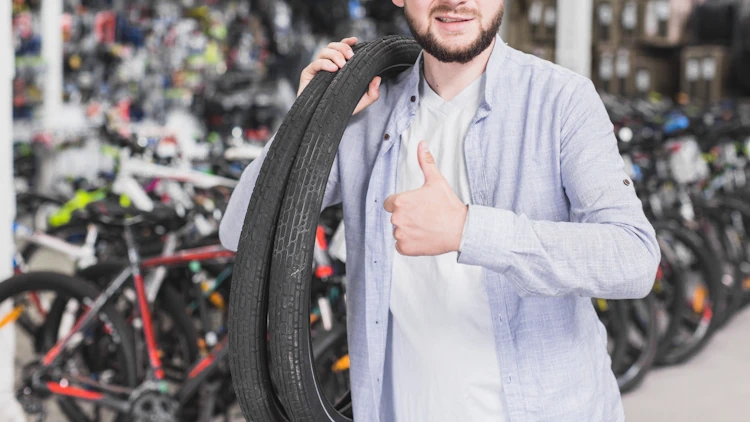Mountain biking is all about pushing boundaries and exploring the great outdoors, and the choice of tires can significantly impact your off-road experience. Tubeless tires have become increasingly popular among mountain bikers due to their numerous advantages over traditional tubed tires. Let’s explore how tubeless tyre enhance mountain biking adventures:
Improved Puncture Resistance
One of the most significant benefits of tubeless tires is their enhanced puncture resistance. With no inner tube to puncture or pinch, tubeless tires are more resilient to thorns, rocks, and other sharp objects found on trails. This means fewer stops to fix flats and more time enjoying the ride.
Lower Tire Pressure for Better Traction
Tubeless tires allow you to run lower tire pressures without the risk of pinch flats. Lower pressures mean a larger contact patch and increased traction, particularly on loose or rough terrain. This translates to better control and confidence, especially when tackling technical climbs and descents.
Reduced Rolling Resistance
Tubeless tires typically have lower rolling resistance compared to their tubed counterparts. The absence of an inner tube reduces friction between the tire and tube, allowing for smoother and faster rides. This can be especially beneficial during long climbs or flat sections, where efficiency is key.

Enhanced Comfort and Control
With lower tire pressures, tubeless tires can absorb more trail vibrations and impacts, providing a more comfortable and controlled ride. This can be particularly beneficial for riders on hardtail bikes or those tackling bumpy and technical terrain.
Sealant for Self-Repair
Tubeless tires are compatible with sealant, which is added during installation to seal small punctures on the go. The sealant seals punctures almost instantly, allowing you to keep riding without having to stop and fix a flat. This added security is invaluable, especially when exploring remote trails.
Versatility
Tubeless tires are compatible with a wide range of wheel sizes and tire widths, making them highly versatile. Whether you’re riding a gravel bike, cross-country bike, or full-suspension trail bike, there’s likely a tubeless tire option that fits your needs and preferences.
Frequently Asked Questions (FAQs)
- Can I convert my current tubed tires to tubeless?
- It’s possible to convert tubed tires to tubeless using a conversion kit, which typically includes tubeless valves, rim tape, and sealant. However, not all tires and rims are suitable for conversion, so it’s essential to do your research and follow the manufacturer’s guidelines.
- What tire pressure should I run with tubeless tires?
- Tire pressure can vary depending on rider weight, tire size, and riding conditions. As a general guideline, many riders start with lower pressures (around 20-25 psi for mountain biking) and adjust based on feel and terrain.
- Can I use tubeless tires on my road bike?
- Yes, tubeless tires are increasingly popular for road bikes due to their improved rolling resistance, comfort, and puncture resistance. However, it’s essential to ensure that your rims are compatible with tubeless tires and that you use the appropriate tubeless setup.
- Do tubeless tires require more maintenance than tubed tires?
- Tubeless tires require regular checks and maintenance, such as topping up sealant and inspecting for punctures. However, the frequency of maintenance depends on riding conditions and how often you ride.
- Can I use regular sealant for my tubeless tires?
- While it’s possible to use regular tire sealant in tubeless tires, it may not be as effective as sealants specifically designed for tubeless systems. Tubeless sealants are formulated to seal punctures faster and more efficiently, so it’s best to use sealants intended for tubeless setups.